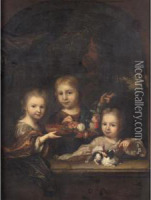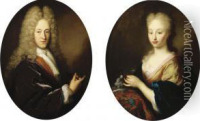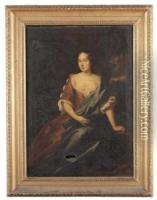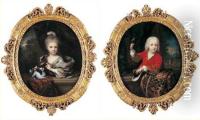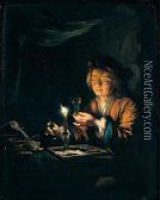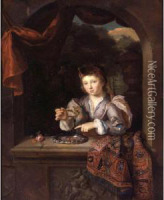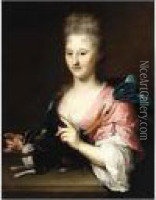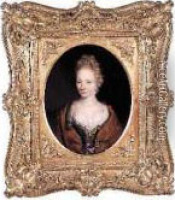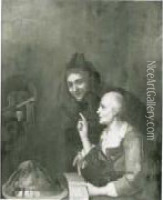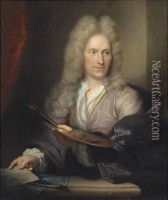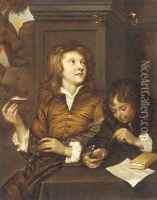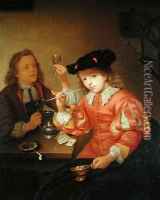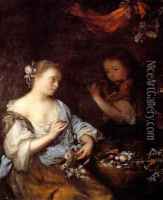Arnold Boonen Paintings
Arnold Boonen was a Dutch portrait painter who enjoyed significant patronage from the early 18th-century Dutch aristocracy and notable figures of his time. Born in Dordrecht, the Netherlands, in 1669, he was initially taught by his father, who was a dealer in pictures. In his formative years, Boonen found influence in the works of artists such as Arent de Gelder, who was a pupil of Rembrandt, and this exposure helped in shaping his own style of painting.
Boonen moved to Amsterdam in the 1690s, where he established himself as a prominent portraitist. His style was characterized by a sophisticated treatment of light and texture, which captured the elegance and dignity of his subjects. He was particularly adept at rendering fabrics and lace, which was a hallmark of his portraits. His works were appreciated for their realism and sensitivity in portraying the individual character of his sitters.
Throughout his career, Arnold Boonen became a sought-after portraitist among the Dutch elite. He painted many leading figures of his time, including members of the House of Orange. His ability to infuse his portraits with life and personality made him a favorite among his patrons, and his portraits were celebrated for their vivacity and detailed representation.
Later in his career, Boonen was appointed as the court painter to the Elector Palatine. This prestigious position further cemented his status as a leading painter of his time. His portraits from this period are considered to be some of his finest works, showcasing his mature style and artistic mastery.
Arnold Boonen passed away in 1729, leaving behind a legacy of portraiture that continues to be admired for its technical skill and psychological depth. His work is represented in various museums and private collections, reflecting his enduring impact on Dutch portraiture during the Golden Age of Dutch painting.


